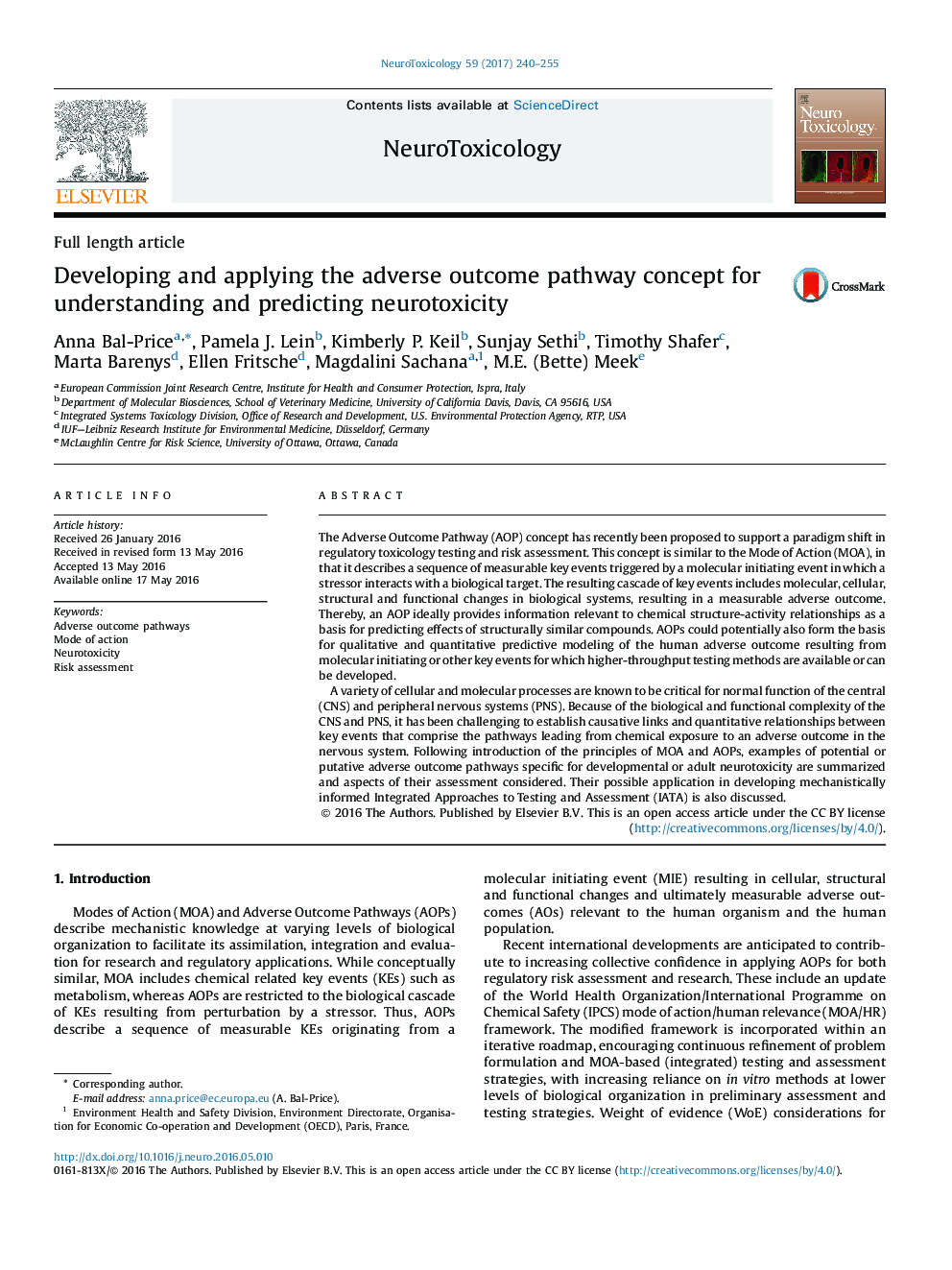| Article ID | Journal | Published Year | Pages | File Type |
|---|---|---|---|---|
| 5560962 | NeuroToxicology | 2017 | 16 Pages |
â¢Identification of similarities and dissimilarities between MoA and AOP and WOE considerations.â¢Discussion of challenges in developing AOPs relevant to neurotoxicity.â¢Evaluation of proposed AOPs for neurotoxicity and developmental neurotoxicity.â¢Relevance of the putative AOPs to current risk assessments.
The Adverse Outcome Pathway (AOP) concept has recently been proposed to support a paradigm shift in regulatory toxicology testing and risk assessment. This concept is similar to the Mode of Action (MOA), in that it describes a sequence of measurable key events triggered by a molecular initiating event in which a stressor interacts with a biological target. The resulting cascade of key events includes molecular, cellular, structural and functional changes in biological systems, resulting in a measurable adverse outcome. Thereby, an AOP ideally provides information relevant to chemical structure-activity relationships as a basis for predicting effects of structurally similar compounds. AOPs could potentially also form the basis for qualitative and quantitative predictive modeling of the human adverse outcome resulting from molecular initiating or other key events for which higher-throughput testing methods are available or can be developed.A variety of cellular and molecular processes are known to be critical for normal function of the central (CNS) and peripheral nervous systems (PNS). Because of the biological and functional complexity of the CNS and PNS, it has been challenging to establish causative links and quantitative relationships between key events that comprise the pathways leading from chemical exposure to an adverse outcome in the nervous system. Following introduction of the principles of MOA and AOPs, examples of potential or putative adverse outcome pathways specific for developmental or adult neurotoxicity are summarized and aspects of their assessment considered. Their possible application in developing mechanistically informed Integrated Approaches to Testing and Assessment (IATA) is also discussed.
